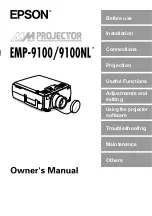
28
pressure measurement. In this case, after the measurement, the
device will indicate any irregularities in your pulse by displaying
the
symbol in the display. This can be an indicator for ar-
rhythmia. Arrhythmia is an illness in which the heart rhythm is
abnormal because of flaws in the bioelectrical system that regu-
lates the heartbeat. The symptoms (skipped or premature heart
beats, pulse being slow or too fast) can be caused by factors
such as heart disease, age, physical disposition, excess alcohol
and tobacco, stress or lack of sleep. If the
symbol appears
on the display after the measurement, the measurement must
be repeated as the measurement accuracy may be impaired. To
assess your blood pressure, only use the results that have been
recorded without corresponding irregularities in your pulse. If
the
symbol appears frequently, please consult your doctor.
Only they can establish the existence of an arrhythmia during a
checkup, using their means of diagnosis.
Risk indicator
The World Health Organization (WHO) has defined the interna-
tionally recognised classification for the evaluation of measured
blood pressure values listed in the table below:
Measured blood
pressure value range
Classification
Colour of the
risk indicator
Systole
(in mmHg)
Diastole
(in mmHg)
≥ 180
≥ 110
High blood
pressure stage 3
(severe)
Red
Measured blood
pressure value range
Classification
Colour of the
risk indicator
Systole
(in mmHg)
Diastole
(in mmHg)
160 – 179
100 – 109
High blood
pressure stage 2
(moderate)
Orange
140 – 159
90 – 99
High blood pres-
sure stage 1 (mild) Yellow
130 – 139 85 – 89
High normal
Green
120 – 129
80 – 84
Normal
Green
< 120
< 80
Optimal
Green
Source: WHO, 1999 (World Health Organization)
The risk indicator (the arrow in the display and the associated
scale on the device) shows which category the recorded blood
pressure falls into. If the measured values are in two different
classifications (e.g. systole in the high normal category and di-
astole in the normal category), the risk indicator then always
shows you the higher category – “high normal” in the example
described.
Please be aware that these standard values can only serve as
a general guideline, as the individual blood pressure varies in
different people and different age groups, etc.
Furthermore, it must be noted that measurements taken your-
self while at home are generally lower than those that are taken
by the doctor. For this reason, it is important that you regularly
consult your doctor for advice. Only they are able to give you
your personal target values for controlled blood pressure – in
particular if you receive medicinal therapy.
Summary of Contents for BM 35
Page 98: ...98 Beurer 1 99 2 99 3 100 4 101 5 103 6 104 7 105 8 110 9 111 10 111 11 112 12 113 13 114...
Page 99: ...99 1 4 1 5 LR03 2 BF F floating BF WEEE Waste Electrical and Electronic Equipment 21 PAP...
Page 100: ...100 IP22 IP 12 5 SN CE 3 Tempestas...
Page 101: ...101 4...
Page 102: ...102 20 C 2...
Page 103: ...103 5 1 2 3 4 5 MEM 6 7 8 9 10 1 3 2 4 5 8 6 9 10 7...
Page 105: ...105 5 Tarih 12 Saat 7 30 5...
Page 106: ...106 1 163 537 22 36 cm 162 973 30 42 cm 2 3 OK...
Page 107: ...107 22 36 162 973 30 42 START STOP 3 START STOP 1 2...
Page 108: ...108...
Page 109: ...109 180 110 160 179 100 109 140 159 90 99 130 139 85 89 120 129 80 84 120 80 1999...
Page 110: ...110 60 MEM MEM MEM 7 5 00 9 00 MEM 7 17 00 21 00 MEM MEM MEM 5 8...
Page 111: ...111 9 22 36 163 537 30 42 162 973 10 E1 25 E2 300...
Page 112: ...112 E3 E3 E3 11 WEEE Waste Electrical and Electronic Equipment Pb Cd Hg...
Page 114: ...114 EN1060 3 3 IEC80601 2 30 2 30 13...
Page 131: ...131...
















































